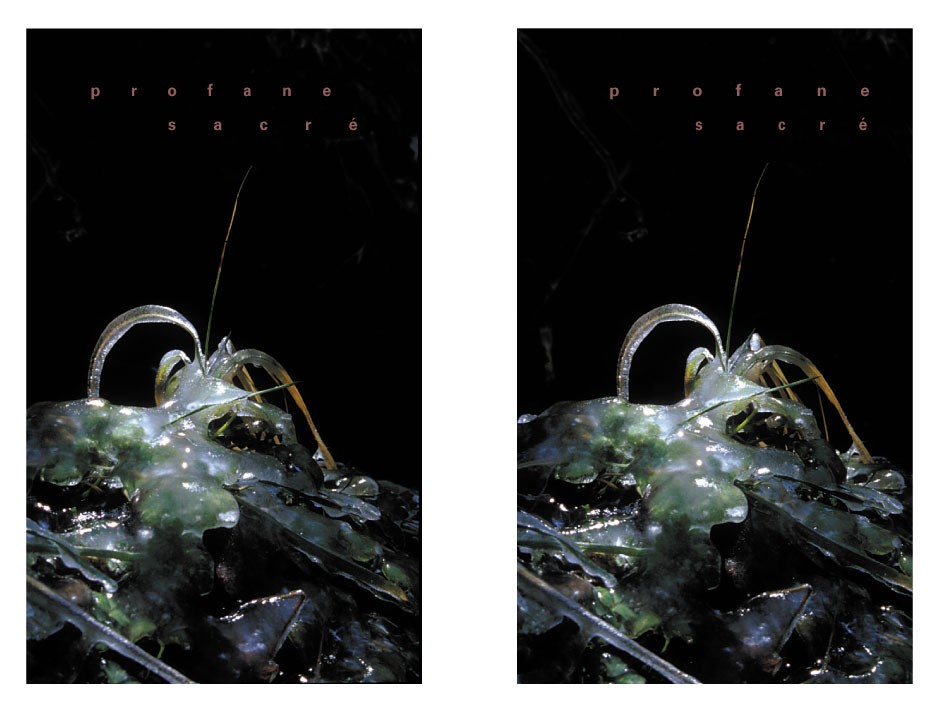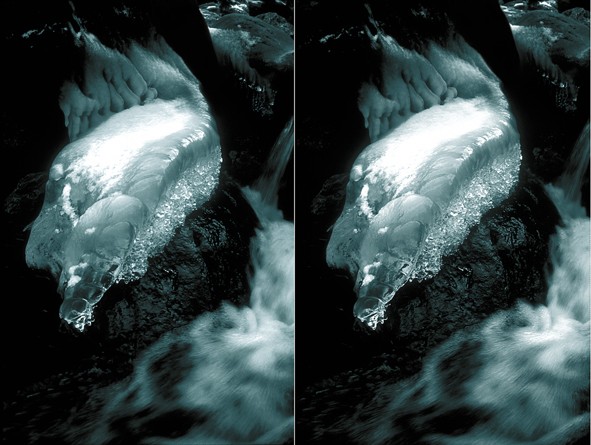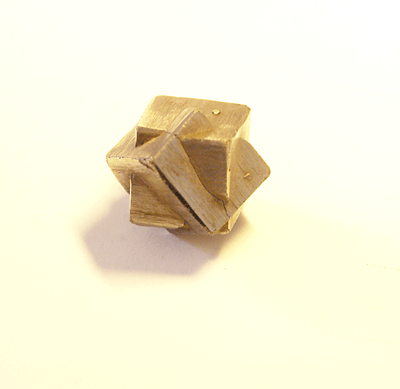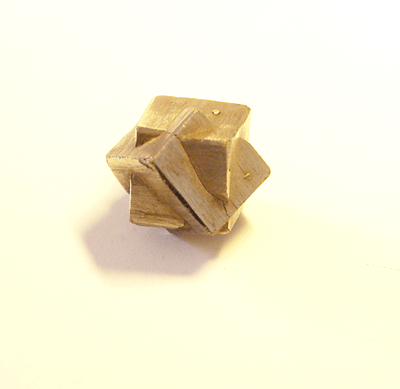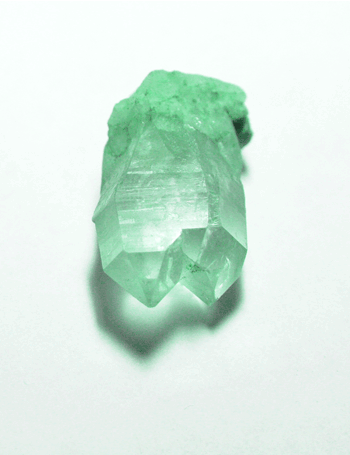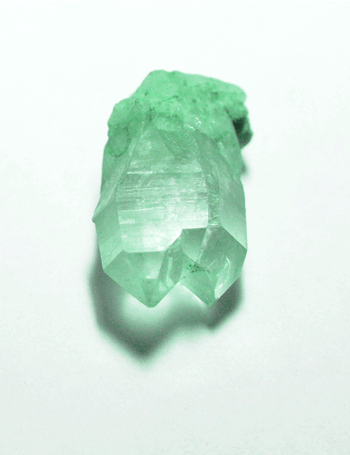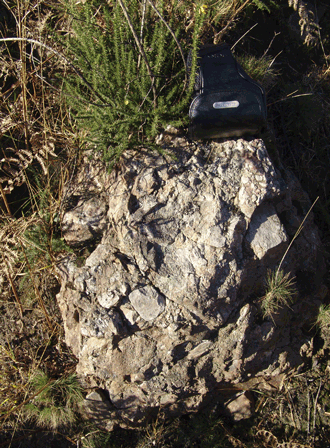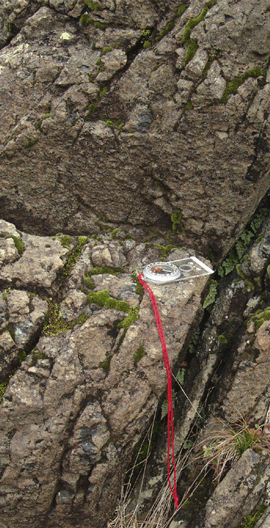Quelques-uns des principaux sujets de Géoforum

▲ Vente et achat de minéraux français et cristaux du monde sur Internet ▲ |
-
Compteur de contenus
2242 -
Inscription
-
Dernière visite
Type de contenu
Profils
Forums
Galerie
Blogs
Boutique
Tout ce qui a été posté par esor6
-
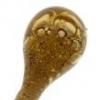
Votre biographie minéralogique
esor6 a répondu à un sujet de smoky dans Forum Minéraux et Minéralogie
salut Rives, en fait, il n'y a qu'une pierre (couleur lie de vin, en forme de cœur). Le reste c'est du vieux chêne. Là, tu devrais trouver! Pour la collec, il s'agit plus d'une accumulation de cailloux non référencés pour la plupart. Là où certain font une photo souvenir, je ramasse un caillou qui me rappelle le lieu. J'ai très peu de pièces "intéressantes" ou de valeur. Adichat, -
Très belles photos Dahu. La glace est un sujet très intéressant. J'ai sous le bras, la maquette d'un livre de photographies stéréoscopiques sur le thème de la glace ! Une image stéréoscopique (pour ceux qui peuvent la lire en vision décroisée). Photo de formations de glace avec un torrent. Au fait : "minéral, corps inorganique, solide à la température ordinaire, constituant les roches de l'écorce terrestre". Et le mercure alors ! Je crois que la glace n'est pas classée dans les minéraux parce qu'elle n'a pas les même propriétés physiques. Elle est moins dense quant elle cristallise, pour les minéraux c'est le contraire ! Cristaux de glace.
-

Votre biographie minéralogique
esor6 a répondu à un sujet de smoky dans Forum Minéraux et Minéralogie
Bonne idée Smoky comme beaucoup de gosses, j'ai été pris très tôt par la fièvre! Vers 9 ans, après avoir trié les caillous du jardin (dans la région bordelaise, très riche en gravier!) et la rencontre d'un vieux collectionneur allemand à Vichy (cure pour mon père), j'ai commencé à dévorer les livres parlant des pierres. La fièvre est retombée à l'adolescence (filles, études d'arts plastiques, ...) A 30 ans, j'ai fait une rechute à cause de quelques livres bien ficelés (volcanisme du système solaire, les fossiles temoins de l'évolution, ...) A 37 ans, nous avons quitté Bordeaux pour les Pyrénées. A pied d'œuvre, je m'en suis donné à cœur-joie! (si bien que j'ai frolé le divorce!) J'ai 47 ans et toujours fiévreux! La géologie m'intéresse de plus en plus. Je ne suis pas un vrai collectionneur, bien qu'il doit y avoir quelques tonnes de cailloux à la maison! (murs non-compris). Je n'achète pas, je n'échange pas... Je donne souvent de jolis cristaux aux enfants pour les contaminer (hé, hé!) Je ramasse les caillous pour le plaisir de les chercher et pour leur capacité à évoquer la grande "cuisine" tellurique. Je cherche de plus en plus et ramasse de moins en moins. J'ai risqué ma vie plusieurs fois (bêtement) sur des sentiers improbables, sans équipement ni chaussures adéquattes. Je ramasse aussi les cailloux sur la plage. J'ai aussi appris à les tailler (merci Abbgems!). Parfois, j'intègre une pierre dans une sculpture. (Je suis sûr que Rives_3 peut nous dire d'où elle provient! (Il connait le 64 comme sa poche!)) Bref, les cailloux prennent pas mal de place dans ma vie et c'est tant mieux! -

applications de NaCl pour les déshérités du monde
esor6 a répondu à un sujet de biaban dans Forum Géologie
çà l'est! -

Dimanche 16/12 Pb avec le chargement d'images
esor6 a répondu à un sujet de Théophraste dans Vie du forum géologique Géoforum
je crois qu'il y a encore des pbs avec le chargement d'image! A vous Youston! -

Améthyste : combien de départements en possèdent ?
esor6 a répondu à un sujet de roc provencal dans Forum Minéraux et Minéralogie
salut à tous, quelqu'un connait-il un ou des gisements dans le secteur de Perpignan? Merci, -

Le plus gros corindon français
esor6 a répondu à un sujet de esor6 dans Forum Minéraux et Minéralogie
salut Didier81 & co, Ha! çà c'est du solide! Belle bête! Comme quoi, les gros spécimen de corindons français ne sont pas une légende! Il a une forme en barillet? Quelle est la couleur dominante? A+ -

Minéraux bretons et cristaux de Bretagne !
esor6 a répondu à un sujet de sophil29 dans Forum Minéraux et Minéralogie
hem! Frangin, Cascaillou a dit que çà raillait pas le verre! -

Minéraux bretons et cristaux de Bretagne !
esor6 a répondu à un sujet de sophil29 dans Forum Minéraux et Minéralogie
salut à tous les bretons et à tous les autres qui n'ont pas la chance de vivre en Bretagne ou de la connaître (c'est mon cas!) Une région où il pleut plus que chez moi! (le 64 toujours vert, même pendant les grandes sécheresses!) Quel joli tas de cailloux vous avez là! Sur le web, j'ai trouvé çà : http://www.minerauxetfossiles.com/revue/de...mero_info62.htm En plus, il y a aussi des saphirs, étoilés en plus! Je suis bleu! Et quel bleu! Rien à voir avec ceux des pyrénées! Je suis sûr que la photo est truquée! Encore bravo! -
un petit résumé : - les vues sont faites avec un APN puis reprises avec un logiciel de retouche et mises sur un seul fichier avec une vue par calque (format.psd ou .tif). Ce fichier est converti en .gif et redimentionné à moins de 500ko avec un plug-in du logiciel ou un logiciel spécifique. - on a une meilleure perception du relief lorsque 2 vues alternent vite et que le décalage due à la prise de vue est minime. - les séquences à 360° sont intéressantes pour percevoir tous les détails d'un objet mais ne restituent pas l'"effet relief" Voilou! la der avec 3 vues (pour orléan) :
-
-
oui, pour les lames minces c'est bon aussi! Faudra peut-être mettre un avertissement pour les âmes sensibles! :coucou!: Sinon, ceux qui ont des cristaux avec de jolis éclats métalliques zou cristallins, çà peut le faire aussi! Un essai vite fait (j'y prend goût!) :
-
encore une et j'arrête! on remarque, lorsqu'on est pas malade, que ce sont les parties qui se déplacent le moins qui produisent le meilleur effet de relief. Il faut que je travaille la prise de vue + la focale et je reviens.
-
pardon pour les nausées, mais c'est pour la bonne cause! encore un petit essaie pour mettre en valeur le relief et les brillances, bien sûr! C'est pas encore au point, mais çà vient!
-

Recherche infos sur les plumasites et buschites
esor6 a répondu à un sujet de alchimiste dans Forum Géologie
je n'en ai pas mais tu devrais trouver çà dans la thèse de Simonet et dans le RM spécial corindon et spinelle. Ce sont des roches claires, feldpathiques. Au plaisir, -
bonjour à tous, cela semble fonctionner! Il faut cliquer sur l'image jointe et patienter un peu pour ceux qui sont en bas débit. Merci pour vos avis.
-

Minéraux des pegmatites françaises
esor6 a répondu à un sujet de smoky dans Forum Minéraux et Minéralogie
salut à tous, Smoky ne blague pas, j'ai moi-même trouvé de très gros spécimens de tourmaline noir brillant (30 cm de long) au sud de St Girons. (photo + tard) L'ariège est un petit paradis pour les minéraux. -

Recherche infos sur les plumasites et buschites
esor6 a répondu à un sujet de alchimiste dans Forum Géologie
Simonet en parle aussi (en français!) dans sa thèse sur les corindons. au fait, je suis aussi preneur d'infos! bien à vous, -

Recherche infos sur les plumasites et buschites
esor6 a répondu à un sujet de alchimiste dans Forum Géologie
salut Alchimiste et André, sujet très intéressant pour qui aime les cœurs bleus foncé! Il y a, semble-t-il, plusieurs appellations pour désigner ce genre de formation. Un copié/collé (un peu raide!) sur les plumasites (j'ai de la doc en pdf sur le sujet pour ceux que çà intéresse): ULTRAMAFIC-RELATED CORUNDUM Q09 by G.J. Simandl1 and S. Paradis2 1 British Columbia Geological Survey, Victoria, B.C., Canada 2 Geological Survey of Canada, Mineral Resources Division, Sidney, B.C., Canada Simandl, G.J. and Paradis, S. (1999): Ultramafic-related Corundum (Contact Metamorphic/Metasomatic); in Selected British Columbia Mineral Deposit Profiles, Volume 3, G.J. Simandl, Z.D. Hora and D.V. Lefebure and T. Höy, Editors, British Columbia Ministry of Energy and Mines, Open File 1999-10. IDENTIFICATION SYNONYMS: Plumasite and marundite deposits, contact-metamorphic corundum and emery, "desilication" or metasomatic sapphire. COMMODITIES (BYPRODUCTS): Rubies, sapphires, industrial grade corundum and emery. EXAMPLES (British Columbia - Canadian/International): Corundum Hill (North Carolina, USA), Emery Hill (New York, USA), Natal and Birdcage camp (South Africa), Umba (Tanzania), Kinyiki Hill and Penny Lane ruby mine (Kenya). GEOLOGICAL CHARACTERISTICS CAPSULE DESCRIPTION: Sapphire, ruby and industrial grade corundum occur within, or adjacent to, aplite, pegmatite, albitite, plumasite or marundite dykes, sills and rarely plugs cutting mafic and ultramafic rocks and their metamorphosed equivalents. Industrial grade corundum is also found commonly along contacts of mafic/ultramafic intrusions with metapelites or other felsic country rocks. It may occur both within country rock and the intrusion. TECTONIC SETTINGS: These deposits occur in orogenic belts where felsic rocks are thrust against silica-undersaturated rocks and within the stable cratons. DEPOSITIONAL ENVIRONMENT / GEOLOGICAL SETTING: Corundum is commonly found in quartz-free reaction zones located along contacts of silica-deficient rocks, such as ultramafic and mafic rocks, with pegmatite, paragneiss, syenite gneiss or other felsic rocks. Country rocks are typically affected by medium to high grade regional metamorphism. AGE OF MINERALIZATION: Archean or younger. Abrasive-grade corundum deposits are commonly contemporaneous with contact metamorphism, while gem-quality corundum may post-date metamorphism and the peak of the tectonic activity. HOST/ASSOCIATED ROCKS: Common host rocks are vermiculite ± chlorite ± asbestos-bearing rocks, plumasite (coarse grained rock consisting of anhedral corundum crystals in an oligoclase matrix), marundite (corundum in margarite matrix), syenite, pegmatite, aplite or hornfels. Associated rocks are ultramafics, a variety of mafic lithologies including gabbro, amphibolite, anorthosite, serpentinite, anthophyllite-chlorite-talc schist, peridotite and dunite and peraluminous orthogneisses or paragneisses. DEPOSIT FORM: Most of the dyke-associated or fracture-controlled deposits that crosscut ultramafic and mafic rocks are planar or lens-shaped; rarely forming vertical plugs. They are less than a metre to 10 metres in thickness and may extend from few metres to several tens of metres along strike. These deposits exhibit several types of mineralogical zoning from the center of the deposit outwards: a. Corundum-chlorite > spinel - chlorite > enstatite > talcose rock > friable dunite > dunite; b. plumasite > biotitite > pegmatite > serpentinite; c. aplite> plumasite>spinel-magnetite rock > vermiculite and/or chlorite > actinolite > talc>serpentinite; d. barren pegmatite> marundite > talc-chlorite zone>amphibolite (pegmatite may not be present). Lenticular or irregularly shaped, corundum-bearing pockets may be also present along the tectonic contacts between gneiss and serpentinite. Some of the gem-quality and most of the industrial grade corundum and emery deposits occur near the contacts of mafic and ultramafic intrusions with country rocks. Emery may form veins, layers and irregular or lens-shaped masses within both endo- and exometamorphic reaction zones. Most of the corundum is typically found in metapelites adjacent to such intrusions. TEXTURE/STRUCTURE: Sapphire and ruby may form rhombohedral or hexagonal prisms or they may occur as clear portions of large, poikilitic corundum crystals that may exceptionally reach over a metre in length. In South African plumasites the corundum crystals commonly vary from 3 millimetres to 10 centimetres. In marundite, corundum occurs as coarse hexagonal crystals embedded in scaly or rosette-shaped aggregates of margarite. Emery rock is typically equigranular, fine-grained (<1mm). It may form layers, veinlets or lenses and irregular zones of massive ore in intrusive and country rock. ORE MINERALOGY: In plumasite and marundite: sapphires, rubies, specimen- quality or industrial grade corundum. Within contact metamorphic zones of mafic and ultramafic intrusions: mostly emery or silimanite-corundum rock or coarse industrial-grade corundum. Along tectonic contacts: rubies, sapphires, specimen and industrial grade corundum. GANGUE MINERALOGY [Principal and subordinate]: In plumasites: mainly plagioclase, ± biotite, ± amphibole, ± fuchsite, ± tourmaline. Some of the solid inclusions identified within sapphires and rubies are zircon, rutile, apatite, boehemite, monazite, hematite, mica, calcite, pyrrhotite and graphite. In marundites: margarite, ± feldspar, ± biotite, ± apatite, ± garnet, ± tourmaline, ± fuchsite, ± kyenite (?), ± talcose material and possibly anthophyllite. In metasomatic zones cross-cutting ultramafic rocks without plumasite core: vermiculite, ± chlorite. The main solid inclusion in gem corundum is vermiculite. In contact metamorphic deposits: a) In emery ores: Hercinite, pleonaste, magnetite, hematite/ ilmenite, ilmenohematite. hypersthene, sapphirine, sillimanite, cordierite, garnet, biotite, feldspar, staurolite, gahnite. Some of the minor constituents in emery ore may be due to hostrock inclusions. In sillimanite-corundum rock: rutile and ilmenite are trace constituents ALTERATION MINERALOGY: Corundum may retrograde into diaspore or mica. In marundites it is commonly partially replaced by gibbsite and margarite. WEATHERING: Some uneconomical primary gemstone and industrial grade deposits may form viable residual or placer deposits. ORE CONTROLS: There are three major spatial controls: 1) fracture zones control metasomatic and plumasite mineralization within the mafic/ultramafic rocks; 2) tectonic contacts control mineralization pockets located between gneisses and serpentinites; and 3) contact metamorphic zones around mafic intrusions are also favourable. GENETIC MODELS: A number of theories explaining the origin of these deposits have been proposed over the years. The three models that appear the most likely are: a) Desilication of granitic pegmatites or pegmatitic fluids by interaction with silica-undersaturated country rocks. This is particularly popular theory to explain the origin of fracture-controlled mineralization associated with marundite, plumasite, vermiculite rock, pegmatite or aplite crosscutting ultramafic country rocks. In the contact metamorphic/metasomatic settings, the high ratio of Al2O3/(CaO+Na2O+K2O) and low silica content that favor corundum formation may be achieved by magmatic interaction of mafic or ultramafic rocks with metapelites or by partial melting of the pelitic country rocks. c) Where the felsic rocks were thrust against ultramafic rocks, reaction zones may have formed under open system conditions during regional metamorphism. ASSOCIATED DEPOSIT TYPES: Placer-type corundum deposits (C01 and C02) and corundum-bearing residual soils. Vermiculite (M08), nepheline syenite (R16) and pegmatites (O01, O02, O03 and O04) may be genetically related to some of the corundum deposits covered by this profile. Corundum-bearing metapelites (P06) may also be present in the same geological setting. COMMENTS: Emery is a black granular rock formed by intergrowths of corundum with magnetite, hercinite or hematite. Emery deposits may also form during regional metamorphism of aluminous sediments, such occurrences are described in the profile P06 (this volume). It is used mainly as an abrasive or for anti-skid surfaces. "Anolite", a highly-priced ornamental stone formed from a famous ruby-bearing zoisite amphibolite from Longido (Tanzania), is closely associated with serpentinites (Keller, 1992). Due to the lack of outcrops, it is not clear if this deposit belongs to the metasomatic type of mineralization described in this profile. Marble and skarn-hosted ruby/sapphire deposits, such as those described by Okrush et al. (1976), also may be similar in origin. Some of these deposits may have formed by essentially isochemical regional metamorphism, while others may be pegmatite and aplite-related metasomatic zones. Marble hosted deposits should be considered as a distinct deposit type. EXPLORATION GUIDES GEOCHEMICAL SIGNATURE: Corundum-bearing lithologies are silica-undersaturated and characterized by their high Al2O3/(CaO+Na2O+K2O) ratio. Saphire, ruby, corundum or emery may be found in heavy mineral concentrates from stream sediments or tills. As well, the solid inclusions within corundum crystals, corundum texture, and associated minerals in the concentrates may be indicative of the type of primary source, such as gem corundum hosted by alkalic rocks (Q10), corundum in aluminous metasediments (P16) and gem corundum in marbles. GEOPHYSICAL SIGNATURE: Ultramafic rocks associated with this deposit type may be detected and possibly delimited by magnetic or electromagnetic surveys. Magnetite-bearing emery deposits may be detected using a magnetometer. OTHER EXPLORATION GUIDES: Some vermiculite occurrences may be worth examining for gem corundum. ECONOMIC FACTORS TYPICAL GRADE AND TONNAGE: Grades are rarely reported for hard rock-hosted sapphire and ruby deposits. They are difficult to determine as these deposits are often high-graded and mined sporadically. A substantial proportion of the production is sold on the black market. Grades of up to 2000 carats of rough gems per ton are reported from the weathered extension of sapphire and ruby rock occurrences at Umba (Tanzania). In another portion of the same property 100 000 carats were recovered from soil above apparently barren veins, but the grade is not reported. In South Africa, plumasites contain 5 to 80% corundum with typical grades around 30 to 40%. Larger deposits may contain 5 to 10 thousand tonnes, but average tonnage is more likely less than 2 thousand tonnes. These deposits were mined in the first half of the 19th century to about 40 metres. Typical content of eluvial deposits associated with plumasites varies from 10 to 20% by volume. The emery deposits of Emery Hill (Peekskill area) consisted of veins (some less than 2cm thick), pods and thin layers parallel to the schistosity. The emery consisted of varying proportions of spinel (0 to 65%), magnetite (20-30%) and corundum (15 to 65%). ECONOMIC LIMITATIONS: Together with emerald, red beryl and diamond, ruby and sapphire are the most valuable gemstones. The most valuable rubies are dark purplish red ("pigeon's blood red"). The most desirable color for sapphire is "Kashmir blue". Star rubies and sapphires exhibit asterism better than any other gems. The color of many natural corundum gems is artificially enhanced by heat treatment. . Due to the highly variable grades and relatively small deposit size, these hard rock deposits are commonly mined by open-cast methods and in some cases by primitive underground methods. END USES: Depending on quality, corundum may be used as a gemstone, abrasive or friction material on non-slip surfaces. Sillimanite-corundum rock is a relatively highly priced material for refractory applications. Some corundum-bearing rocks are used as ornamental stones. IMPORTANCE: Most corundum gems are recovered from regoliths, residual soils or gravels, and as byproducts of placer mining (C01, C02). They may be also found in alkali basalts, lamprophyres (Q10) and rarely in aluminous metamorphic rocks (P06) and marbles. However, deposits of this type, remain worthwhile targets for prospectors and small exploration companies. Clear, nearly inclusion-free corundum crystals are produced synthetically, and compete with natural gems. Silicon carbide and artificial corundum manufactured from bauxite has largely replaced corundum and emery in most industrial abrasive applications. Today, the combined consumption of industrial grade corundum and emery in the USA is estimated to be less than 10,000 tonnes/year. REFERENCES Andrews, P.R.A. (1991): Summary Report No. 15: Minor Abrasives-Corundum, Emery, Diatomite, Pumice, Volcanic Ash and Staurolite; Canada Centre for Mineral and Energy Technology, Division Report MSL 91-110 ®, 91 pages. Barker, F. (1964): Reaction Between Mafic Magmas and Pelitic Schist, Cortland, New York; American Journal of Science, Volume 262, pages 614-634. De Villiers, S.B. (1976): Corundum; in Mineral Resources of the Republic of South Africa, Coetze, C.B., Editor, Geological Survey of South Africa, Volume 7, pages 341-345. DuToit, A.L. (1918): Plumasite (Corundum-aplite) and Titaniferous Magnetite Rocks from Natal; Transactions of the Geological Society of South Africa, Volume 21, pages 53-73. Grant, J.A. and Frost, B.R. (1990): Contact Metamorphism and Partial Melting of Pelitic Rocks in the Aureole of Laramie Anothosite Complex, Morton Pass, Wyoming; American Journal of Science, Volume 290, pages 425-427. Hall, A.L (1920): Corundum in Northern and Eastern Transwal; Union of South Africa Geological Survey, Memoir 15. Keller, P.C. (1992): Gemstones of East Africa; Geosciece Press Inc., 144 pages. French, A.E. (1968): Abrasives; in Mineral Resources of the Appalachian Region; United States Geological Survey, Professional Paper 580, pages 261-268. Game, P.M. (1954): Zoisite-amphibolite with Corundum from Tanganyika; Mineralogical Magazine, London, Volume 30, pages 458-466. Gillson, J.L. and Kania, J.E.A. (1930): Genesis of the Emery Deposits near Peekskill, New York; Economic Geology, Vol. 25, pages 506-527. Hughes, R.W (1990): Corundum. Butterworth-Heinmann, London, 314 pages. Keller, P.C. (1990): Gemstones and Their Origin; Van Nostrand Reinhold, New York, 144 pages. Larsen, E.S. (1928): A Hydrothermal Origin of Corundum and Albitite Bodies; Economic Geology, Volume 23, pages 398-443. Okrusch, M., Bunch, T.E. and Bank, N. (1976): Paragenesis and Petrogenesis of a Corundum-bearing Marble at Hunza (Kashmir); Mineralium Deposita, Volume 11, pages 278-297. Pattison D.R.M. and Harte, B. (1985): A Petrogenic Grid for Pelites in the Ballachulish Aureole and other Scottish Thermal Aureoles; Journal of Geological Society of London, Volume 142, pages 7-28. Pattison D.R.M. and Tracy, J. (1991): Phase Equilibria and Thermobarometry of Metapelites; in Contact Metamorphism, D.M. Kerrick, Editor, Reviews in Mineralogy and Petrology, Volume 26, Mineralogical Society of America, pages 105-204. Robb, L.J. and Robb, V.M. (1986): Archean Pegmatite Deposits in the North-Eastern Transwaal; in Anhausser, C.R. and Maske, S. Editors, Mineral Deposits of Southern Africa Volume I, Geological Society of South Africa, Johannesburg, pages 437-449. Rossovskiy, L.N. and Konovalenko, S.I. (1977): Corundum Plagioclasite of the Southwestern Pamirs; Doklady Academie Science. U.S.S.R., Earth Science Section, Volume 235, pages 145-147 Sinkankas, J. 1959: Gemstones of North America; D.Van Nostrand Company Inc, New York, 675 pages. Solesbury, F.W. (1967): Gem Corundum Pegmatites in NE Tanganyika; Economic Geology, Volume 62, pages 983-991. October 10, 1999 [Q06] [Q07] [Q08] [Q09] [Q10] [Q11] [Published Profile Index] [Deposit Profiles] Last Updated June 13, 2003 -
très intéressant ces dreikanters Victor, mais je pense + à une érosion naturelle en milieu montagnard d'un morceau de marbre avec remplissage siliceux.
-

Le plus gros corindon français
esor6 a répondu à un sujet de esor6 dans Forum Minéraux et Minéralogie
Bien, je me passerai de la recette! C'est dommage pour moi parce que chaque année je fais un peu de miel avec quelques copains et j'aurais aimé en convertir une partie en boisson barbare! Tant pis! PS pour redsun : je ne sais pas changer le titre! Pour en revenir à nos moutons (alumineux), j'ai eu plus de d'infos sur le chouchen que sur le principal sujet de ce post! Certes, le spécimen dont je vous ai parlé est singulier, mais il me semble que, vu le contexte géologique français, il ne devrait pas faire figure d'exception. Un petit effort messieurs/dames! -

Le plus gros corindon français
esor6 a répondu à un sujet de esor6 dans Forum Minéraux et Minéralogie
il faut rebaptiser ce post "chouchen et corindon" (merci webmaster!) Si quelqu'un nous donne la vraie recette du chouchen, je veux bien dire si Alchimiste a raison! -

Le plus gros corindon français
esor6 a répondu à un sujet de esor6 dans Forum Minéraux et Minéralogie
et même que ceux qui en boivent on beaucoup de succès en dicothèque -

Le plus gros corindon français
esor6 a répondu à un sujet de esor6 dans Forum Minéraux et Minéralogie
Bon d'accord Rives, on partage le chouchen et tu vas poster ailleurs! A+ -

Le plus gros corindon français
esor6 a répondu à un sujet de esor6 dans Forum Minéraux et Minéralogie
Tiens, c'est drôle, je n'arrive plus à me rappeler où j'ai bien pu trouver ce caillou! Peut-être que çà va me revenir si vous m'offrez l'équivalent de mon poids en chouchen! Je ne fait que 75 kg!



